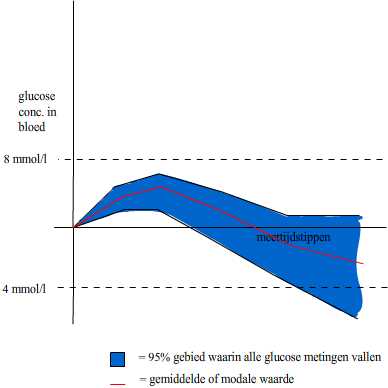Difference between revisions of "Databased advisory System"
(add new page) |
|||
| (One intermediate revision by the same user not shown) | |||
| Line 32: | Line 32: | ||
The system forms relations by the input taken for the past. | The system forms relations by the input taken for the past. | ||
Absolute weights are acquired by manual weighting and inserted into the system. In normal life, people use the same amount of food. they use the same plate and cups. The system could be provided with a function that relates the absolute weights with the relative weigths. This could be done with three manual measurements. On the background the absolute values are still being used. Periodically the system has to ask the user to revalidate the weigths the system uses. This protects the system from natural changes. | |||
The system must be able to make combinations of entries inserted in the past, to generate advise in the present. | The system must be able to [[make combinations]] of entries inserted in the past, to generate [[advise]] in the present. | ||
Next idea is based on the MetisII project, a translation machine that translate dutch noun phrases into english ones. When time progresses the database will be filled with entries. When a new entr | Next idea is based on the MetisII project, a translation machine that translate dutch noun phrases into english ones. When time progresses the database will be filled with entries. When a new entr | ||
Advise can be stated in the form: | Advise can be stated in the form: | ||
Latest revision as of 10:37, 30 May 2006
Advise without teaching
The user periodicaly enters their personal information into the system.
Less frequent entries are:
- weight/muscle mass
- maximal kilojoules intake
- health status
Frequent entries are:
- Food intake (product + volumn)
- Insulin intake (volumn + type)
- Glucose values
- Activities/stress
These entries has to be marked with a timestamp(default present time, else the time that the activity occured).
The user fills the database just like he is accustomed with his own personal logboek. This is an advantage, because people gladly work with things which they already known. After time the database will be filled with entries who shows resemblance with each other.
Example:
02-03-2006 11:50 apple 40 gram
02-03-2006 11:53 sandwich cheese/ham
02-03-2006 11:57 sandwich salad
02-03-2006 15:00 6,6 mmol/l glucose
14-03-2006 12:00 apple 30 gram
14-03-2006 12:05 sandwich cheese/ham
14-03-2006 12:12 sandwich salad
14-03-2006 15:00 6,5 mmol/l glucose
The system forms relations by the input taken for the past.
Absolute weights are acquired by manual weighting and inserted into the system. In normal life, people use the same amount of food. they use the same plate and cups. The system could be provided with a function that relates the absolute weights with the relative weigths. This could be done with three manual measurements. On the background the absolute values are still being used. Periodically the system has to ask the user to revalidate the weigths the system uses. This protects the system from natural changes.
The system must be able to make combinations of entries inserted in the past, to generate advise in the present. Next idea is based on the MetisII project, a translation machine that translate dutch noun phrases into english ones. When time progresses the database will be filled with entries. When a new entr Advise can be stated in the form:
- Het foodintake today is justifide, because in de past at day ... has the glucoselevel in blood between 4 and 8 mmmol/l after ... hours.
- Het entries of today are compared from those of the past. The result shows to take a different course of action than that of the past. On ... day were your glucose level not in the safety area of 4-8 mmol/l.
The results have to been shown in a userfriendly format. In that way the user can decide if the recommendations are usefull or that the system made an error. Maybe it is posible to validate the recommendations the system generates by the user.
Because more than one user is entering input to the system, other kinds of advise can be generated. It is extremly usefull with entries of new foodintake. Input of others can generate upper and downvalues wich indicates how much insulin can be used.
Example of advise is:
- This is new inputdata. Several persons have inserted the same input. The range of insulin intakevalues which were used lays between ... and ... units
Collecting multiple glucose measurements of persons who ate the same thing, produces a cloud of points. This can be transformed to an area of prediction, which indicates the chances a person gets a hypo or a hyper.
